PROGRAM - SEPTEMBER 7, 2016
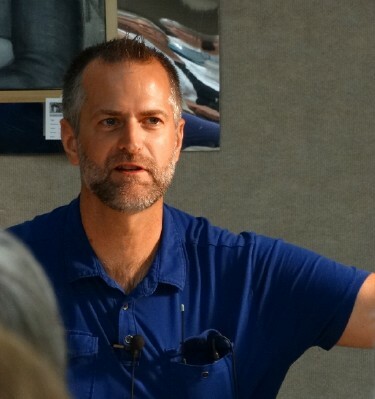
Program Chair, Claudia Taylor, introduced Peter Frederick, a self-taught painter from NE Ohio. Peter has been a Landscape Designer, only “dabbled” in painting until about 2009, after his four children did not need his full attention. Peter has been in 13 Juried competitions, has had five Solo Exhibits, and is a Signature Member in three states. In 2014, he discovered “teaching” art and found that he loves it.
Peter traveled to the North West Coast, to Oregon and to San Francisco; took lots of pictures, which he can now use as source materials for many paintings. He usually doesn’t paint directly from the picture, but uses parts of a couple of them to set up a sketch with a better composition.
As far as the “nitty-gritty” goes, Peter usually uses a quarter sheet of paper in his teaching session. He likes his porcelain palette; Windsor Newton paints; mostly all “cheap” brushes; Grumbacher masking or masking tape; gouache when needed (does not worry about being a purist, or using only transparent paints); and uses “dirty” water! His list also includes sponges, test paper, salt, Hake wash brush, and an Xacto knife. Peter admits to painting somewhat tight and small.
Peter has prepared some videos - PeterFrederickartist on FaceBook/UTube.
Procedure: After Peter has drawn a satisfactory sketch with good composition, and has done a value pattern, he puts his sketch onto the watercolor paper using a grid.
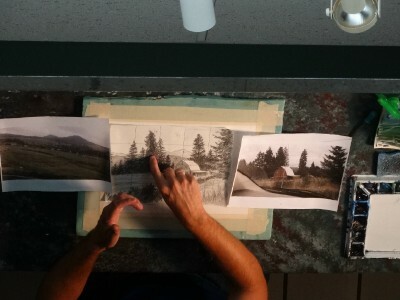
He generally paints in “layers”. He uses only 10-12 colors, on Arches 140 lb. Cold Press paper. He tapes his paper (Scotch Painter Tape) completely on all four sides to a sheet of Insulation (cut to size) that he buys at the hardware store.
He generally wets the whole paper, and then does one of his favorite parts: puts the first wash; his favorite because it means he has “started” his painting! He allows it to move a bit on the paper. His other favorite part is the last wash, because by then he can tell if it’s going to be a good painting or not!
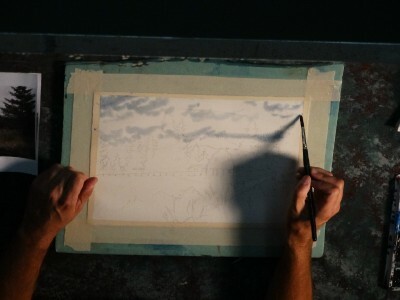
Peter sometimes dries each wash with a dryer, but, sometimes, lets it dry naturally - while he plans the next part, or does some other necessary thing. If he makes a “mistake”, as he says he does from time to time, he merely rewets that part and reworks it. He likes to use gravity to put or keep the pigment where he wants it to be while drying, turning the dryer or painting to do this.
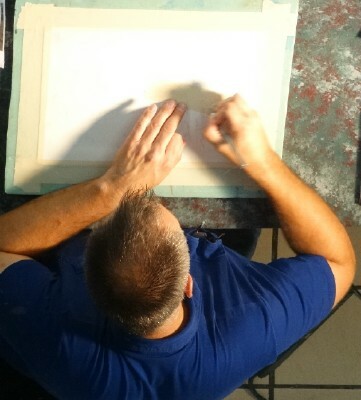
Sometimes he uses masking fluid or masking tape to preserve certain parts while he adds on other layers. As he was doing this painting, he used Paynes Gray and Sap Green to do the distant hills; then put in more green for the closer hills.
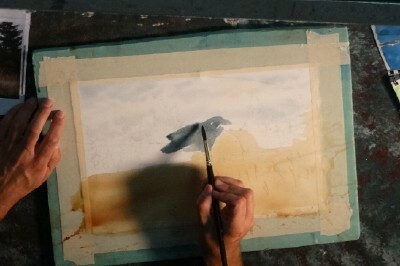
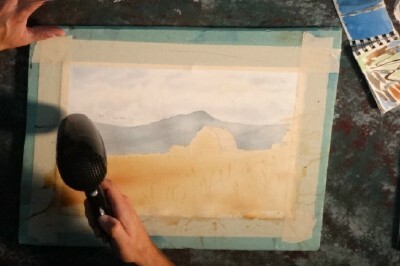
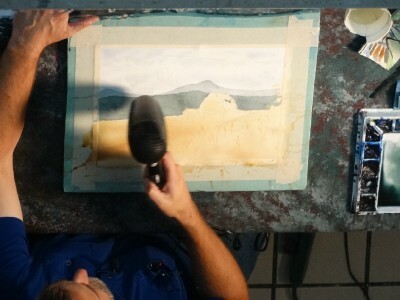
He also used Raw Umber, Burnt Umber and Burnt Sienna. Peter used a very small brush to paint the Evergreen trees, and did not worry about making them exactly like the picture, or to paint every needle, etc. He advised to make sure that we do not paint “cones” or “pyramids” instead of pines. Use different sizes and shapes; different negative spaces. If he has painted something too dark, he “lifts” some of the color. For this painting, he will use a variety of reds for the building, and will spend more time on the foreground, perhaps using a fan brush; perhaps some splatters; or perhaps a little darker color in the lower corners.
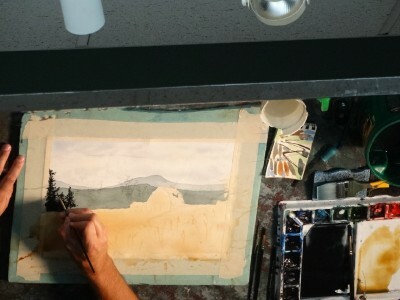
Peter always asks his students “Why are we doing this? (particular technique, etc.) The answer is “To make our painting more interesting”. The group enjoyed watching the painting take shape. Peter participated in some Critiques of members’ paintings.
Submitted by Joyce Grothaus, Secretary, GCWS, September, 2016
Photos by Deb Ward

